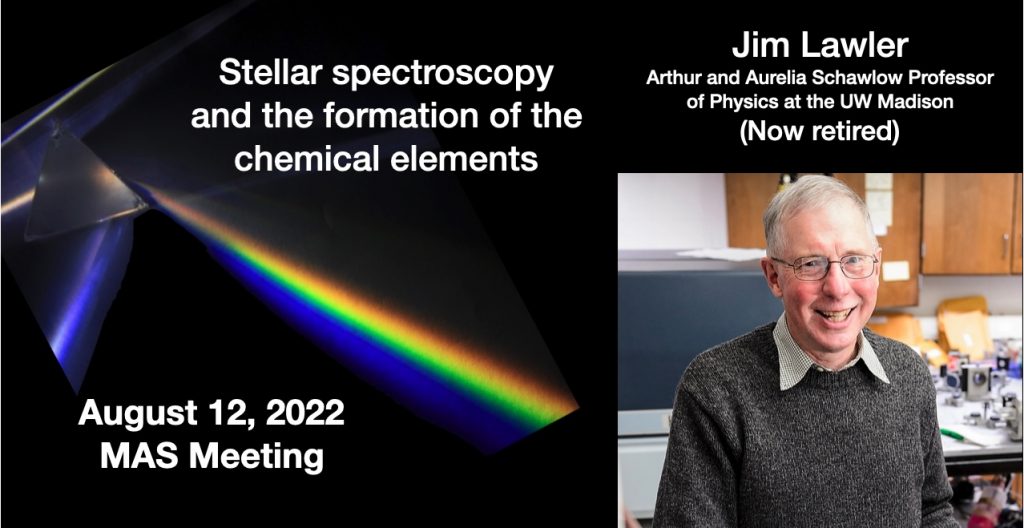Stellar spectroscopy and the formation of the chemical elements

Dr. Jim Lawler, UW Madison Dept of Physics, the Arthur and Aurelia Schawlow Professorship
I will talk about how we measure spontaneous decay rates between two energy levels of an atom or ion, how stars produce spectra, and links between basic spectroscopy (like my group’s activities) and astronomy. Nearly everything humanity knows, or may every learn, about the detailed physics and chemistry of the remote Universe is from spectroscopy. I will mention the importance of quantization and the future of the quantum internet if time allows.
Before retiring in May of this year, Jim Lawler was the Arthur and Aurelia Schawlow Professor of Physics at the UW Madison. Lawler spent his career in atomic, molecular & optical physics with a focus on developing and applying laser spectroscopic techniques to determine accurate absolute atomic transition probabilities.
Lawler received his MS (’74) and PhD (’78) from this department, studying with now-professor emeritus Wilmer Anderson. In the two years after earning his doctorate, he was a research associate at Stanford University, and returned to UW–Madison as an assistant professor in 1980.
Lawler has accumulated numerous awards and honors over his distinguished career. He is a fellow of the American Physical Society, the Optical Society of America, the U.K. Institute of Physics, and in 2020 he was elected a Legacy Fellow of the inaugural class of American Astronomical Society Fellows. He won the 1992 W. P. Allis Prize of the American Physical Society and the 1995 Penning Award from the International Union of Pure and Applied Physics for research in plasma physics, the two highest National and International Awards in the field of Low Temperature Plasma Physics. In 2017, he won Laboratory Astrophysics Prize of the American Astronomical Society for research in spectroscopy.
The August MAS meeting live stream on YouTube has been scheduled. If you haven’t done so, go to the Madison Astronomical Society YouTube channel and click on the subscribe button. If you watch any of the MAS videos please click on the “Thumbs up” button. It helps to make the channel more visible to others on YouTube.
